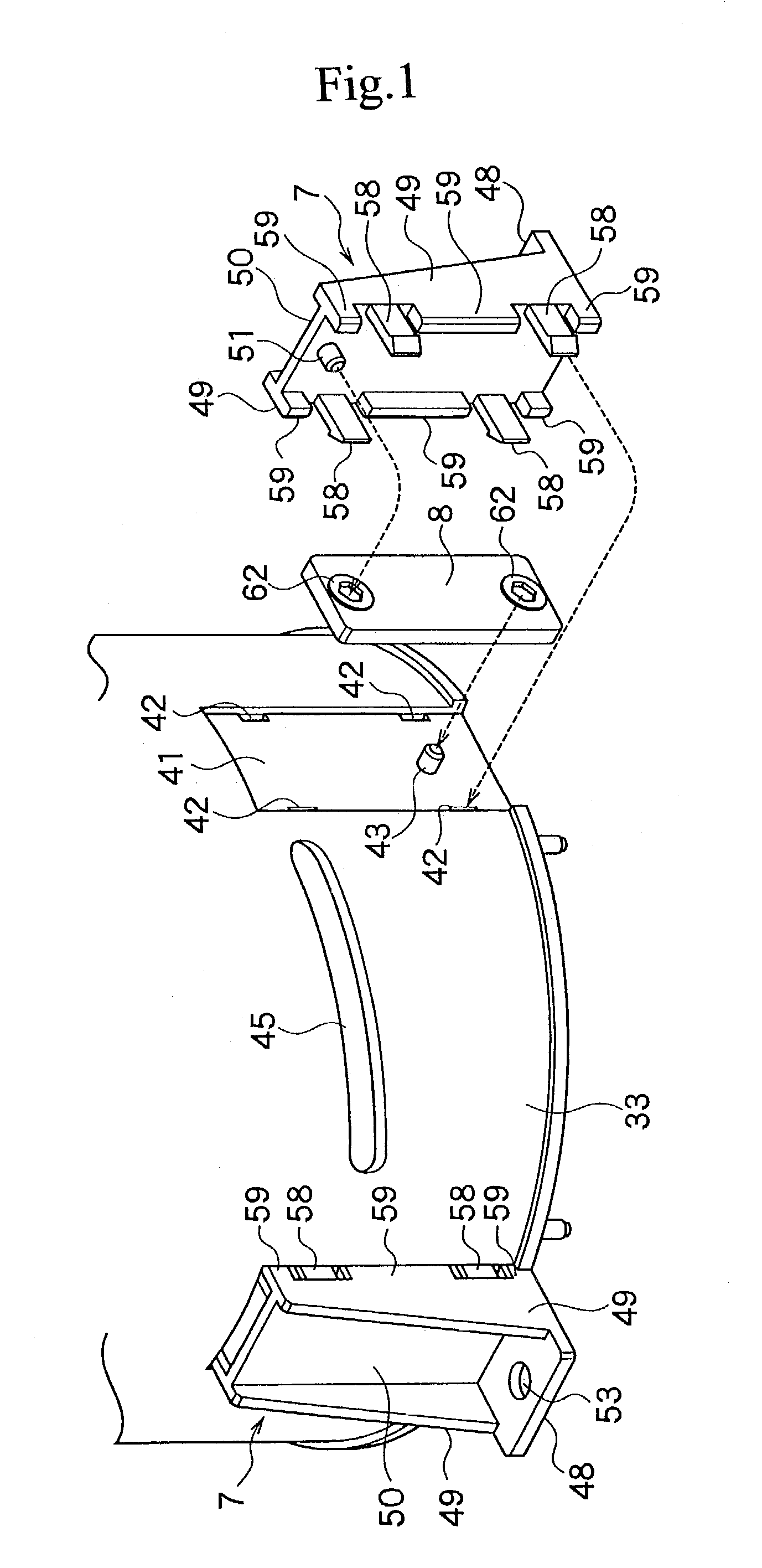Projection lens unit
a technology of projection lens and lens body, which is applied in the direction of electrographic process apparatus, mountings, instruments, etc., can solve the problems of heat loss, image on the screen may become blurred, and heat of the light source becomes an issue, etc., and achieves stable slide and high accuracy
- Summary
- Abstract
- Description
- Claims
- Application Information
AI Technical Summary
Benefits of technology
Problems solved by technology
Method used
Image
Examples
Embodiment Construction
[0046]Referring now to the drawings, preferred embodiment of a projection lens unit according to the present invention will be described in detail below. In the following description, it is assumed that the projection lens unit is incorporated in a projector. Two embodiments of projection lens units will be described herein.
[0047]In a projector, an image which is formed by a CRT 1 is magnified by a projection lens unit 2 and projected onto a screen (not shown), as shown in FIG. 3 to FIG. 7. Accordingly, the projection lens unit 2 is directly fixed to the CRT 1. The CRT 1 and a coupler 5 of the projection lens unit 2 are integrally secured by CRT support fittings 3 (refer to FIG. 6). The front surface of the CRT 1 (left surface in FIG. 3) is formed as a flat plane on which the coupler 5 is mounted.
[0048]A first preferred embodiment of the projection lens unit 2 is shown in FIG. 3 and FIG. 4. The projection lens unit 2 projects an image, which has been formed by the CRT 1, onto a scre...
PUM
 Login to View More
Login to View More Abstract
Description
Claims
Application Information
 Login to View More
Login to View More - R&D
- Intellectual Property
- Life Sciences
- Materials
- Tech Scout
- Unparalleled Data Quality
- Higher Quality Content
- 60% Fewer Hallucinations
Browse by: Latest US Patents, China's latest patents, Technical Efficacy Thesaurus, Application Domain, Technology Topic, Popular Technical Reports.
© 2025 PatSnap. All rights reserved.Legal|Privacy policy|Modern Slavery Act Transparency Statement|Sitemap|About US| Contact US: help@patsnap.com



